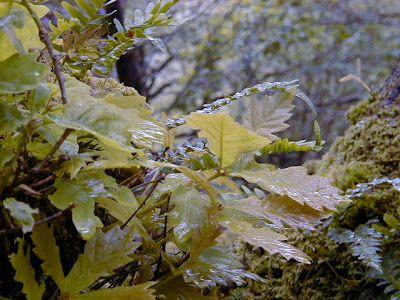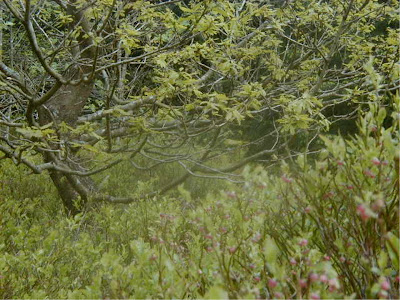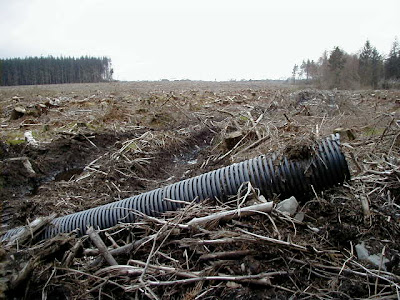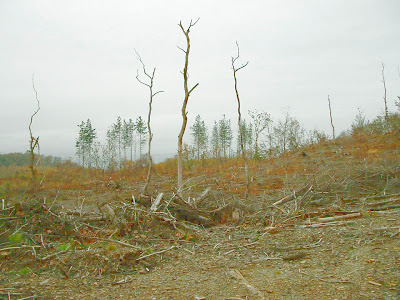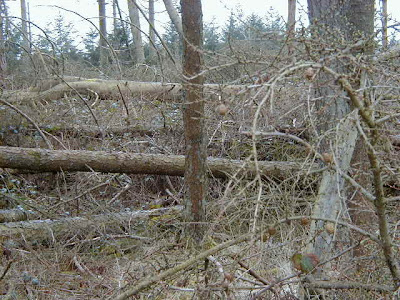In 1946 it looks a denuded wasteland, holding less than half the trees now growing here.
Woods that I had taken for granted as dripping West Wales rain-forest are only sixty years old. There is not a shred of bush or stump in view. You can trace where the ribs of rock ridges show through, as if the earth was starved after five years of total war. Like an over-worked horse.
Bald bites of clearfell glare bright inside what woods remain. Fields long since sunk into marginal grazing are pockmarked with regular heaps of lime or slag ready for spreading.
The enormity of how different it is hasn’t sunk in. I need to gaze at it for hours.
We have built an idyll of an earlier landscape expressing peasants' intimate care, when perhaps it was as scavenged and bare as third-world peasant landscapes are today.
What it does here though is explain how happily people embraced the large-scale Forestry Commission coniferous plantings after the war as welcome totems of new growth in such a scarred and hard-faced landscape.
After I had picked my way through those young moorland Sitka plantations for a day’s moss, I could call on the district forester, Glyn Jones, who knew his patch pretty well, so we could share information.
He lent me a boot-full of forestry in-house periodicals. They start by extolling the vigour and excitedly charting likely yields of the various conifer species being planted.
Leafing on ten years, articles on how to combat different mites and rusts and squirrel attacks dominate.
Another ten years and the absence of any realistic price has dawned, along with discussions on ‘re-spacing’ to counter ‘wind-throw’, and how to avoid the attack of spruce-bark beetles.
It was bleak reading.
Having been re-elected on a landslide, Margaret Thatcher was just starting to ‘rationalise’ the Forestry Commission, by making them sell their less profitable holdings. They had dragged their heels during her first term of office, so she was out for blood.
I suspect that they were still deluding themselves, or wearing the invisibility coat of pride, in not admitting that none of the forests they managed were, or were ever likely to be, profitable in current Monetary terms. (When that creed’s logic was eventually extended to embrace the Whole Earth's economy of carbon credits and sinks, the case changed, but too late for the FC estate. )
They idiotically decided to sell of their more diverse, older woods, keeping the sitka monocrop moorland forests: that needed no more subtle management than a mad monkey or a timely box of matches could have given.
That was when I became a woodland owner rather than just a nomadic watcher of events. It was the start of a time when I seemed to know less each day.
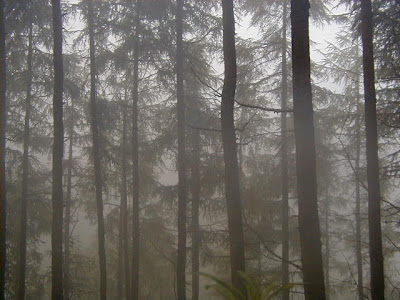
Twenty years on and we all I hope know more of that less. There is a lot to unlearn.
People tell me that the Forestry Commission has changed, but I suspect its underlying default of proactive regulation to maximise tree growth remains.
There is a kind of deft, cursory care that the natural world seems to love and respond to. These ‘little disturbances of man’ can trigger response in quiescent ecosystems.
I remember hearing of an elaborate scheme to raise water-levels on Borth Bog, the flower of which was a long pool filling a rut left by a tracked digger.
This was a lesson of 'chance, occurrence overwhelming prescriptive control. Heart over Head.
